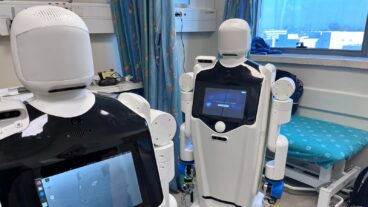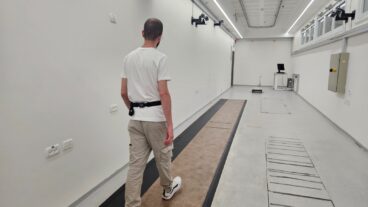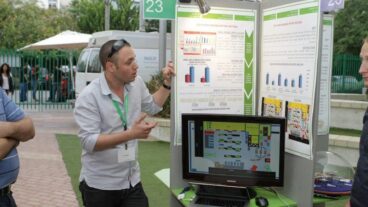The researchers are now developing a simple blood test based on these findings which will be able to detect smokers who are at especially high risk of developing lung cancer. A genetic marker that increases susceptibility to lung cancer in smokers by 500 to 1,000 percent has been discovered by researchers at the Weizmann Institute of Science in Rehovot.
Published in the Journal of the National Cancer Institute, the findings show that smokers who carry the newly discovered genetic marker are approximately 120 times more likely to get lung cancer than non-smokers who do not have the risk factor. The researchers are now developing a simple blood test based on these findings which will be able to detect smokers who are at especially high risk of developing lung cancer.
The findings, made by Prof. Zvi Livneh and Dr. Tamar Paz-Elizur of the Biological Chemistry Department, are a result of many years of research conducted on the role of DNA-repair mechanisms in cancer. The scientists focused on lung cancer, one of the most common and most deadly cancers, responsible for 30% of all cancer deaths. In the USA alone there are 160,000 new patients per year. Smoking is the major cause of lung cancer, and 90% of hospitalized lung cancer patients are smokers. However, only 10% of heavy smokers develop the disease, suggesting involvement of a personal genetic susceptibility.
The Weizmann researchers invited Dr. Meir Krupsky of Sheba Medical Center at Tel Hashomer to collaborate on determining whether this susceptibility is caused by a decreased ability to repair DNA damage.
‘Our DNA is damaged about 20,000 times a day by factors such as sunlight, smoke, and reactions within the body,’ Livneh said. ‘If left unrepaired, damage to the DNA can lead to cancer. Fortunately, the body has a stock of enzymes whose function is to repair DNA. These enzymes scan the DNA and detect damage using sophisticated sensor systems. Upon detection of damage, the enzymes perform an ‘operation’ on the DNA, cutting out the damaged part and replacing it with a new DNA part. Thus the efficiency of the repair system is critical for the prevention of cancer who are at especially high risk of developing lung cancer.’
“Statistics show that only 10 percent of `heavy’
smokers develop lung cancer,” Livneh told Ha’aretz. “We asked ourselves what are the differences between smokers, and reached the conclusion that some are more sensitive or have a genetic predisposition. Our research shows that one of the reasons for the varying degrees of sensitivity is connected to a low level of one
of the repairing enzymes.”
“The more efficient the repairing enzymes, the
less the risk of mutations leading to cancer,”
says Prof. Zvi Livneh.
Livneh and his team concentrated on a specific DNA repair enzyme, called OGG1. The team developed a new blood test that enabled them to measure the level of activity of OGG1. Using this method, the researchers found that 40% of lung cancer patients have low levels of OGG1 activity, in contrast to only 4% of the general population.
These and other findings published in the study show that low OGG1 activity results in high susceptibility to cancer, five to 10 times more than those whose OGG1 activity is normal. Smoking increases this risk, since it causes more damage for DNA repair enzymes, including OGG1, to fix. Smokers who have a low level of OGG1 activity were found to have the greatest risk of lung cancer, as much as 120 times higher than non-smokers with regular levels of OGG1 activity. The findings suggest that a substantial portion of lung cancer cases might result from a combination of smoking and reduced OGG1 activity.
“That’s very logical,” says Livneh. “A person
whose natural repair mechanisms are weak is
more exposed to the damage caused to the
genetic makeup since the repairing system is
not capable of handling the burden. As a
result, a large number of mutations form and
the risk of lung cancer increases.”
Livneh said the research had several ramifications.
“Anti-smoking campaigns are not very effective
in most cases because it is a general warning
and people say, `It won’t happen to me.’ Now,
if a person has a test and discovers they are
in a high risk group, they will regard it as a
personal message and it might give them
motivation to quit smoking.”
Livneh added that his team was now working on
the development of a simpler, cheap way for
health organizations worldwide to offer blood
tests that would provide information about the
risk level of someone being examined.
“It takes us three days to get results in the
labs. The goal is to make the test simple. In
addition, we’ll examine the connection between
this enzyme and others that are responsible for
other forms of cancer.”












